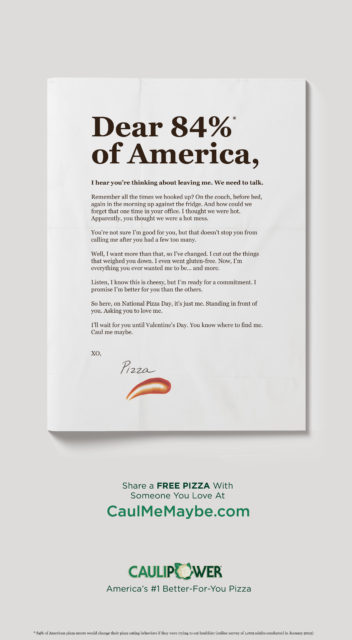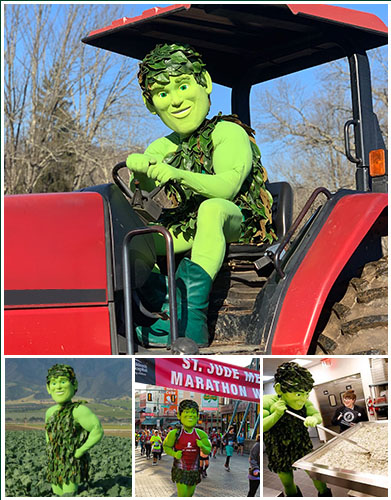This week’s executive shifts include GoDaddy hiring a new chief marketing officer, Famous Footwear appoints the former CMO of JCPenney, Asics America appoints a new EVP of sales, categories and marketing, American Greetings hiring the PGA Tour CMO, Apple hiring a new head of marketing for AR, Sony Interactive Entertainment promoting its head of global sales and marketing, NASCAR broadening the role of their CMO, SmileDirectClub appointing a new CMO, Shake Shack appointing Bark’s former CMO, Skyscanner hiring a former ClassPass exec and Terra’s Kitchen appointing a new senior vice president of marketing.
Check out our careers section for executive job openings and to post your own staffing needs.
GoDaddy Appoints Chief Marketer
GoDaddy announced Fara Howard as the company’s new chief marketing officer. According to the press release, Howard will lead “marketing strategy and execution, including brand and performance marketing, community engagement, and customer lifecycle management.”
Before taking the role at GoDaddy, Howard was chief marketing officer of Amazon Fashion, Amazon’s retail clothing vertical that famously implemented influencers on the platform. Howard was also vice president of global marketing at Vans and spent at 10 years working at Dell.
NFL’s Miami Dolphins Appoint VP Marketing
The Miami Dolphins named Laura Sandall as vice president of marketing amid a slew of other appointments. Sandall joined the Dolphins after spending the last two years at the Michaels Companies as vice president of marketing. She also spent four years in a senior role at JCPenney.
World Surf League Hires SVP
The World Surf League named Pat O’Connell the company’s new senior vice president of tours and head of competition. O’Connell is currently the vice president of sports marketing at Hurley.
“From competitor to surfer rep to board member to commissioner, he really has given his all for surfing to get it to where it is today and I couldn’t be more thankful,” said O’Connell on the appointment. “It’s super hard to leave my family at Hurley as it’s been such a huge part of my life for more than 15 years. I’ve had an incredible experience at Hurley, but I’m beyond excited for the opportunity to lead the competitive aspects of surfing and further elevate the sport. I believe in the WSL, I believe in what it can be, and I’m stoked.”
NASCAR Expands Role for Chief Marketing Officer
NASCAR’s executive vice president and CMO Jill Gregory will start to lead broadcasting, communications and NASCAR’s digital platform, including NASCAR.com, the NASCAR Mobile app and fantasy games. She is currently responsible for brand marketing, team and driver marketing, content strategy and analytics and insights.
Gregory joined NASCAR in 2007 and prior to that served as senior vice president at Bank of America.
Famous Footwear Hires Former JCPenney CMO
Caleres has appointed Marci Grebstein as senior vice president of marketing for Famous Footwear. She will oversee all aspects of marketing for their stores and famous.com. Previously, Grebstein served as chief marketing officer at J.C.Penney since 2017. Before that, she worked as the CMO for Lowe’s Companies.
“Marci is passionate about connecting emotionally with consumers and understands how to market to them in a realistic, authentic, and relatable way,” said Molly Adams, president of Famous Footwear, in a statement. “Her ability to get inside the DNA of a brand and bring it to life will be invaluable to our mission of making Famous Footwear the favorite place to shop for shoes and will help accelerate Famous Footwear’s growth.”
Sky Deutschland Appoints New CMO
Sky Deutschland, a German media company, has appointed Barbara Haase as the company’s chief marketing officer. She will oversee brand, marketing and communication and Sky Creative. She will also direct the strategy of the German pay-TV broadcaster’s marketing in all areas and the brand strategy of sub-brands. Prior to this, Haase served as chief creative officer and CMO of TUI Group.
Asics Hires New EVP of Sales, Categories And Marketing
Asics promoted Richard Sullivan as the company’s EVP of sales, categories and marketing for Asics America. Previously, Sullivan served as president of Asics Canada.
Former PGA Tour CMO Becomes Greeting Card CEO
American Greetings appointed Joe Arcuri as the company’s new chief executive officer. He’s expected to start the role on March 1. Arcuri is currently finishing his tenure at PGA Tour, where he has been the chief marketing officer since 2017.
Prior to the PGA Tour, Arcuri held executive and senior roles at P&G and Newell Rubbermaid. Arcuri’s appointment to CEO at American Greetings comes as current CEO John Breeder retires.
“We’re excited to have Joe join American Greetings. Joe is known for building strong teams that work together to create a winning culture,”American Greetings Board Chairman and former PepsiCo President John Compton said. “At the same time, we appreciate John Beeder’s contributions to American Greetings and wish him well in his retirement.”
Apple Hires A New Head Of Marketing For AR
Apple appointed Frank Casanova as the new senior director of worldwide product marketing at Apple augmented reality. Previously, Casanova served as the senior director for iPhone partner marketing. A longtime Apple exec, Casanova joined the company in 1997 as the senior director of macOs graphics, audio and video. According to Business Insider, he was instrumental in launching the original iPhone and developing QuickTime video player.
“There’s now a name and face on Apple AR efforts and a person with a track record of working on advanced technology projects at Apple,” said Michael Gartenberg, former Apple senior director of marketing to Business Insider. “Frank is the ideal person to lead Apple’s efforts in AR.”
Sony Interactive Entertainment Promotes Head of Global Sales And Marketing
Sony Corporation and Sony Interactive Entertainment (SIE) has promoted Jim Ryan as president and CEO of SIE. Ryan will also assume the role of representative director and president of SIE’s Japan-based legal entity, Previously, he served as SIE deputy president and prior to that he was head of global sales and marketing at SIE.
Ryan joined Sony Interactive Entertainment’s Europe-based entity in 1994 and has been responsible for leading the PlayStation business.
SmileDirectClub Appoints New CMO
SmileDirectClub, a DTC dentistry company, is promoting John Sheldon as the company’s chief marketing officer. Previously, he served as the company’s chief digital officer, where he assisted in reaching new customers and directing digital and mobile platforms.
Before joining the SmileDirectClub team, Sheldon worked as chief revenue officer of Fresh Direct, an online grocer.
Shake Shack Hires Former Bark CMO
Shake Shack hired Jay Livingston as the company’s new chief marketing officer. Prior to joining Shake Shake, Livingston served as CMO for DTC brand Bark—makers of Barkbox. The burger restaurant collaborated with Bark in December to offer a line of chew toys. According to AdWeek, Livingston plans on analyzing customer data and personalize Shake Shack’s digital elements.
Livingston told AdWeek both companies are “fun, authentic brands that are changing a status quo that’s existed a long time.”
Prior to Bark, Livingston spent 20 years at Bank of America, working his way up to SVP of global marketing.
Skyscanner Hires New Chief Marketing Officer
Skyscanner, a travel fare website, has appointed Joanna Lord as their new CMO. Previously, Lord worked as the chief marketing officer at ClassPass. Lord will help to expand the marketing department at Skyscanner, boost the brand and lead a marketing team of about 300 people.
Lord also served as chief marketing officer at BigDoor Inc., a white label software platform.
Skyscanner CEO Bryan Dove said: “I’ve known Joanna for years and have been consistently impressed with her impact on brands and her leadership in creating world-class teams. Joanna is joining us at an exciting time in our growth story after nearly doubling our growth function in the last few years. We’re excited to have an exceptional marketing leader joining our team to guide our next steps in helping travelers globally.”
Terra’s Kitchen Hires A SVP of Marketing
Terra’s Kitchen, a meal-kit delivery service, has hired Anthony Pitts as their new senior vice president of marketing. Prior to that, Pitts served as the VP of performance marketing for the mattress company, Leesa Sleep. In his new role at Terra’s Kitchen, Pitts will be responsible for driving their growth strategy and digital changes.
Editor’s Note: Our weekly careers post is updated daily. This installment is updated until Friday, February 15. Have a new hire tip? We’re looking for senior executive role changes in marketing and media. Let us know at editorial@alistdaily.com.
Job Vacancies
| Chief Marketing Officer | eBay | London, UK |
| Chief Marketing Officer | Moog Music Group | Asheville, NC |
| Vice President, Marketing Strategy | Saks Fifth Avenue | New York, NY |
| VP, Brand Marketing | Carl’s Jr. | Franklin, TN |
| Head of Marketing | Uber | London, UK |
| VP Marketing Analytics | DISNEY | New York, NY |
Make sure to check back for updates on our Careers page.




